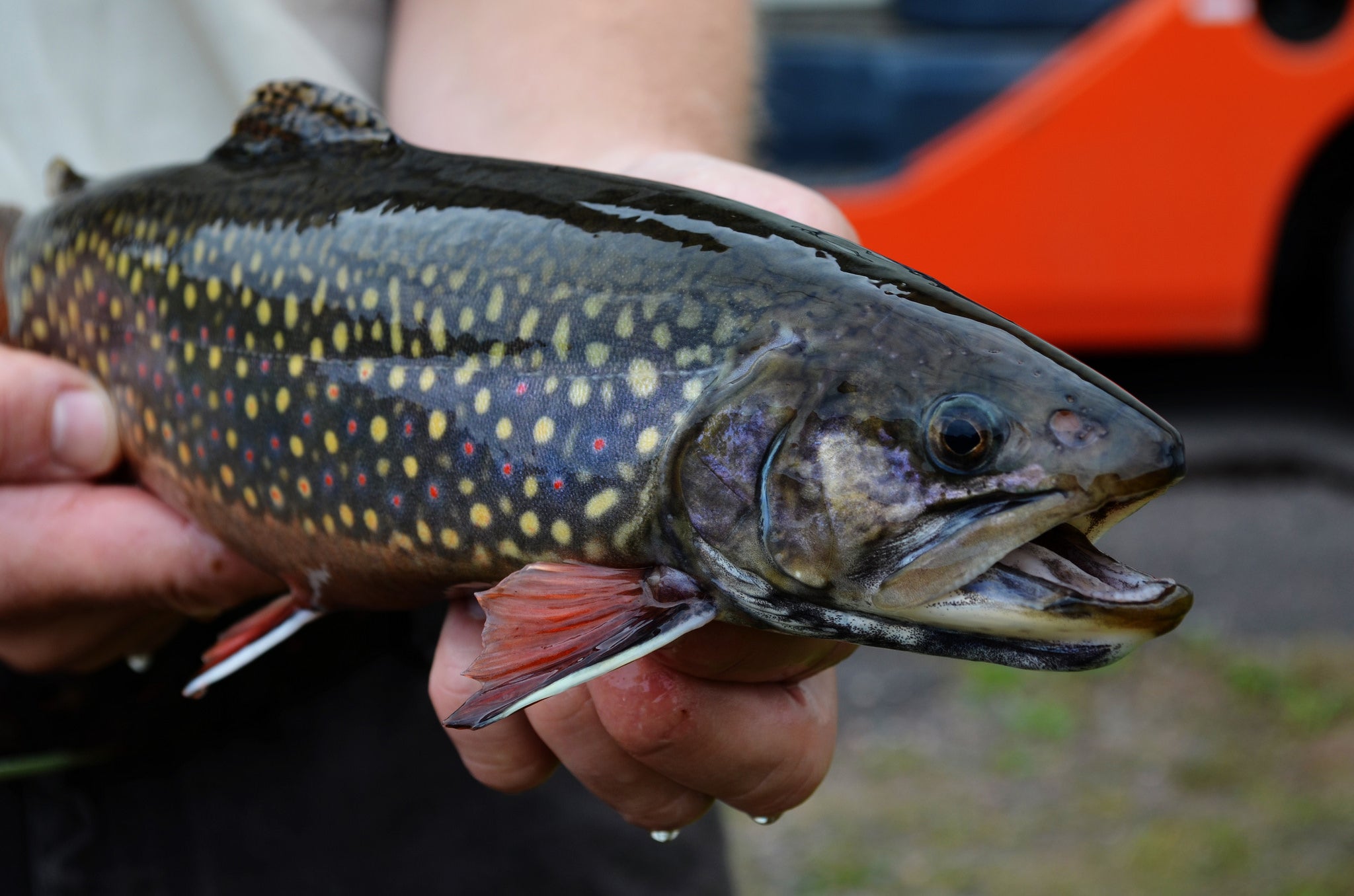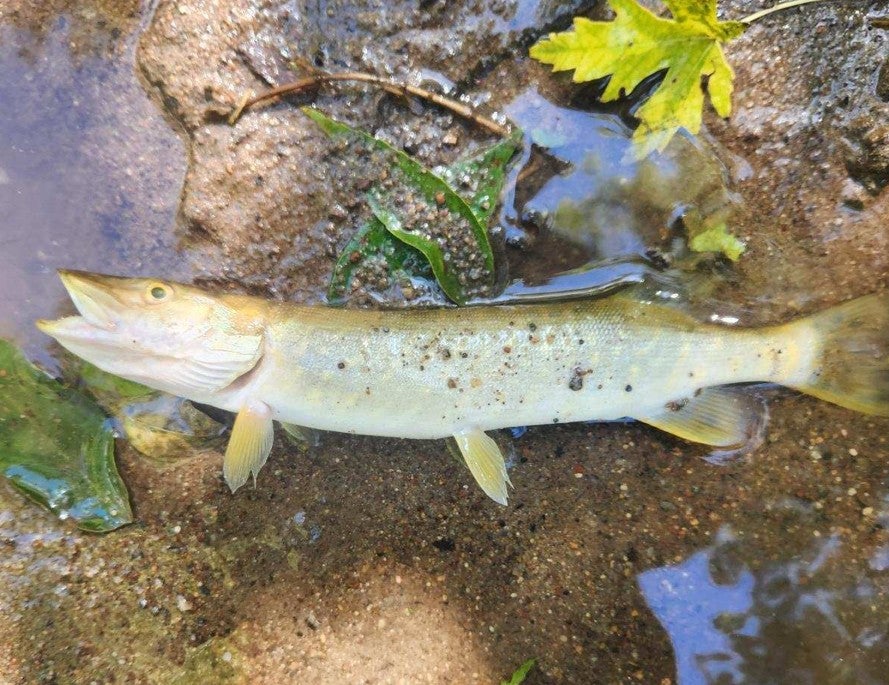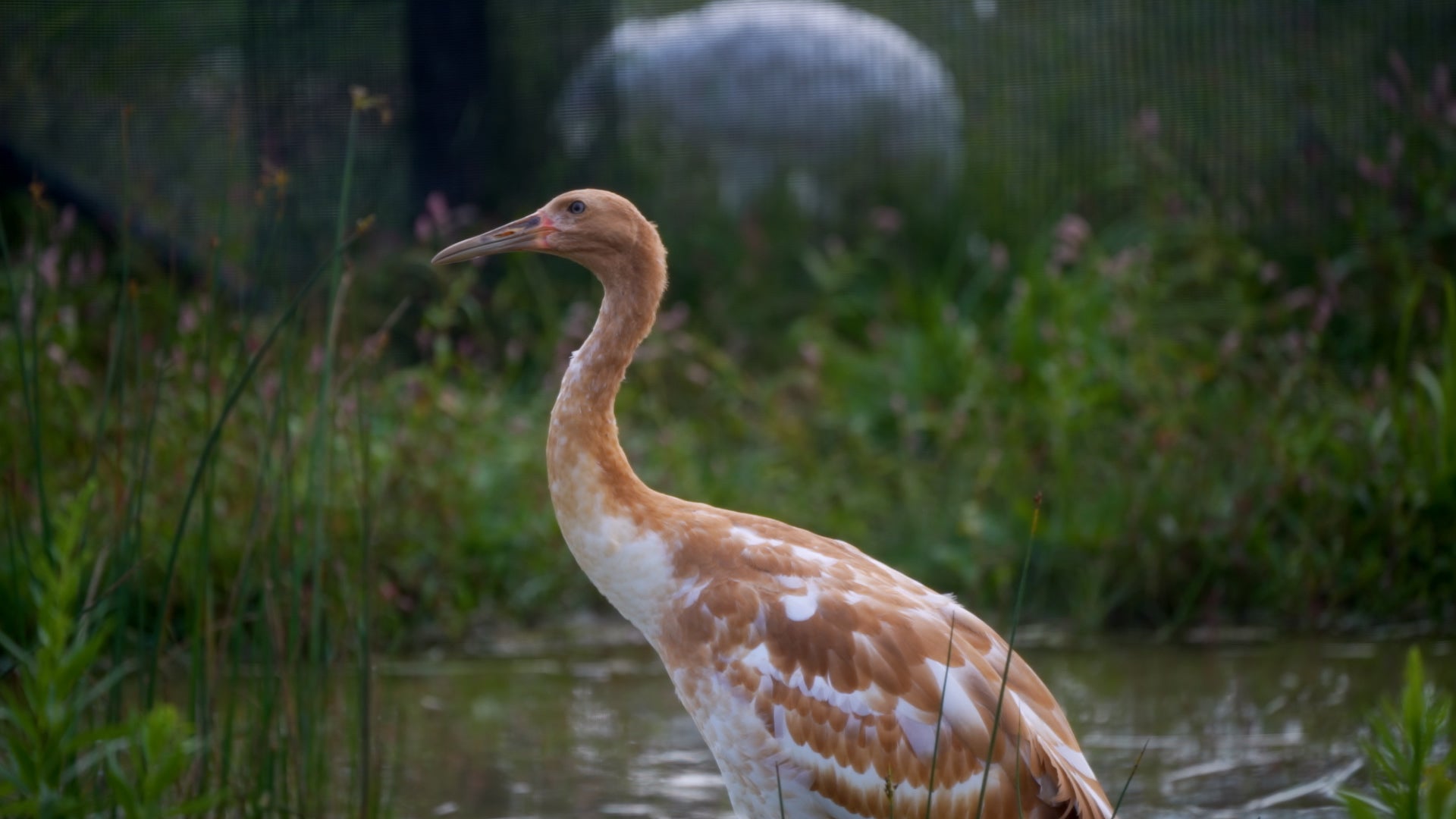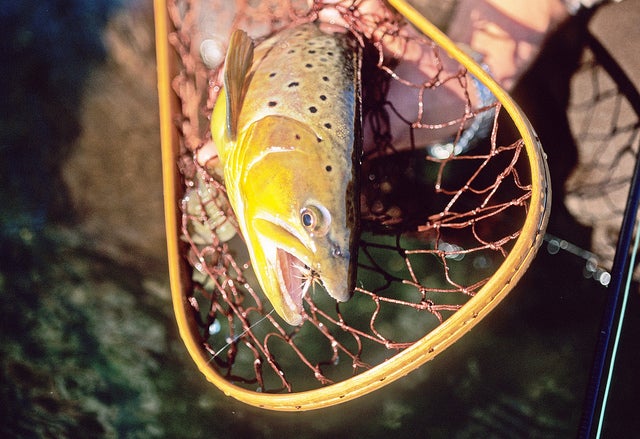For the first time, the Wisconsin Department of Natural Resources has discovered a parasite in wild trout that’s known to cause disease, raising questions about its potential effects on fish populations.
The DNR said Wednesday that tests showed the microscopic parasite Myxobolus cerebralis turned up in brook trout within Elton Creek, a Class 1 trout stream in Langlade County.
The parasite affects fish like trout and salmon. It requires two hosts as part of its life cycle, fish and a small bottom-dwelling worm in streams and ponds. The parasite can infect young fish, attacking their cartilage and nerve tissue. It can also lead to whirling disease. Symptoms of the disease include fish swimming in circles, fish deformities and a black tail.
David Giehtbrock, fish culture section leader with the DNR, said discovery of the parasite in wild trout is a serious issue.
“It has had significant effects in the western states on trout populations,” Giehtbrock said. “We note that we didn’t find any clinical signs of disease in the Elton Creek fish that we examined.”
Fish infected with the parasite don’t pose a risk to human health, but anglers are urged not to eat fish showing signs of sickness or disease. Giehtbrock said it’s unclear what effect the parasite may have on fish populations, but rainbow and brook trout are most susceptible to the disease.
The state routinely tests for the parasite as part of inspections at about 2,500 registered fish farms. The DNR tested wild fish for the parasite after the Wisconsin Department of Agriculture Trade and Consumer Protection, or DATCP, notified the agency that it had been found within rainbow trout during a routine inspection at a private fish farm.
Giehtbrock declined to comment on whether the parasite originated from the fish farm, directing questions to state agriculture officials. Sam GO, communications director for DATCP, said the parasite was detected at the fish farm Silver Moon Springs in Elton.
“DATCP’s veterinary staff are working with the farm to mitigate the spread of the disease including removing the affected fish from the farm,” GO said.
The parasite can spread through the movement of infected fish, stream flows, anglers, wildlife and birds.
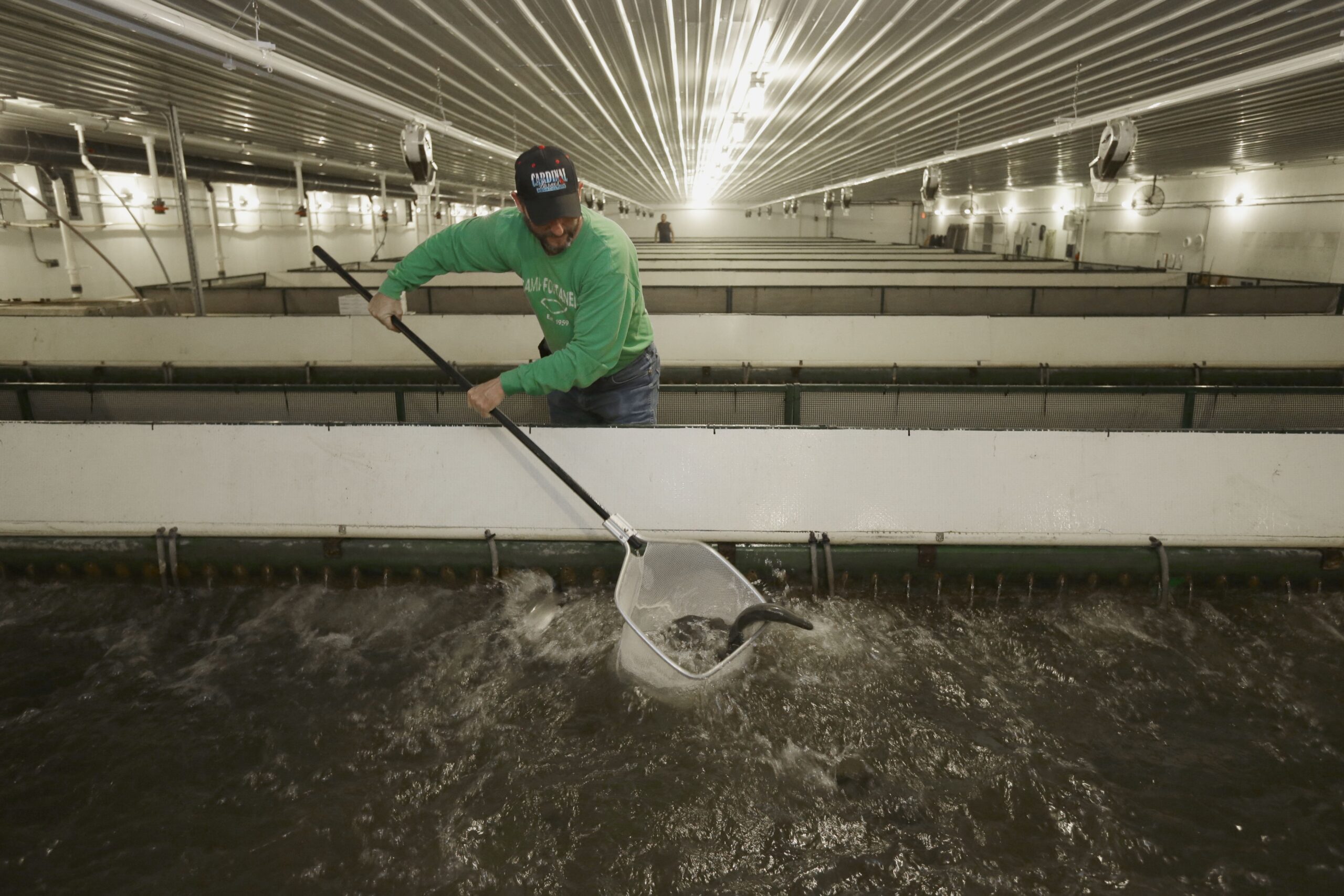
Parasite found in more than 20 states
News with a little more humanity
WPR’s “Wisconsin Today” newsletter keeps you connected to the state you love without feeling overwhelmed. No paywall. No agenda. No corporate filter.
The invasive parasite was introduced to the United States from Europe, and it was first discovered in Pennsylvania in 1958. It’s been detected in 23 states, according to the Maryland Department of Natural Resources.
In states like Colorado, whirling disease is suspected to be a major factor in the decline of rainbow trout, according to Colorado Parks and Wildlife. However, other environmental factors may play a role.
Myron Kebus is an aquaculture outreach veterinarian and assistant professor with the College of Veterinary Medicine at Michigan State University. Kebus, who is based in Madison, previously served as Wisconsin’s State Fish Health Veterinarian for 23 years until 2022. He travels throughout the Midwest working with fish farms, hatcheries and veterinarians serving those facilities.
During the 1990s, Kebus said the spread of the disease in trout out west coincided with other significant changes to streams and water temperatures that could contribute to fish kills. He stressed the detection of the parasite doesn’t mean that fish will develop whirling disease.
“In the eastern states, while it has been detected and in some cases found in very high levels in fish, these fish did not display any signs of illness,” Kebus said. “And that may be because there’s other environmental factors that need to combine with the presence of the infectious parasite to make the fish sick and to make the fish die.”
DNR to monitor the parasite’s presence throughout the state
While fish farms and hatcheries have long been testing for the parasite, Kebus said there’s been limited testing of wild fish populations. He said it’s uncertain how widespread the parasite is among wild trout and salmon, as well as the rate of infection.
Now, the Wisconsin DNR will conduct surveillance throughout the state to get a better idea of whether whirling disease exists or if any other trout populations have been affected by the parasite.
“We’re going to work with our local biologists, talk to them about locations that would make sense, look at our records about stocking and the movement of fish around the state,” Giehtbrock said.
Kebus said reasons the parasite is being seen now could include changes in testing that result in better detection or a potential increase in its prevalence in fish or the environment.
“At this point one of the things I can say is the parasite has not caused major disease, mortalities on hatcheries or farms,” Kebus said. “I’m not aware of any reports in our region of the country that it has caused any major disease in trout or salmon.”
Even so, the DNR is urging people to report if they see any signs of whirling disease in fish, and the agency urges anglers to disinfect their fishing gear. The agency said anglers should remove any mud, water or vegetation from their gear by the stream before a thorough cleaning. Boats, trailers, boots, waders, nets and other fishing equipment should also be dried before they’re used again.
“We certainly don’t want to move the parasite around,” Giehtbrock said. “Because once it’s somewhere, there’s no way to get it out of the system.”
Wisconsin Public Radio, © Copyright 2026, Board of Regents of the University of Wisconsin System and Wisconsin Educational Communications Board.
